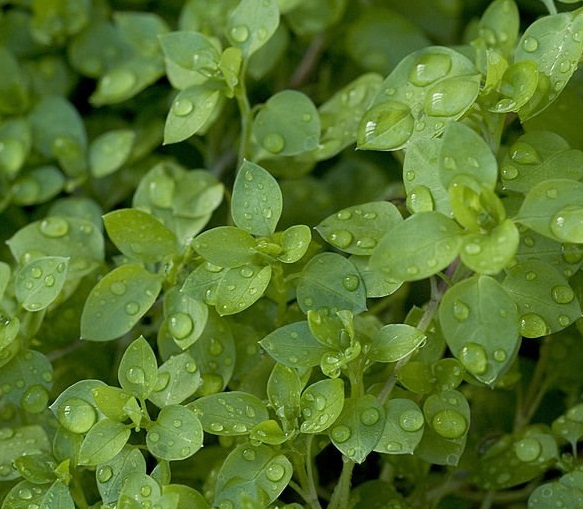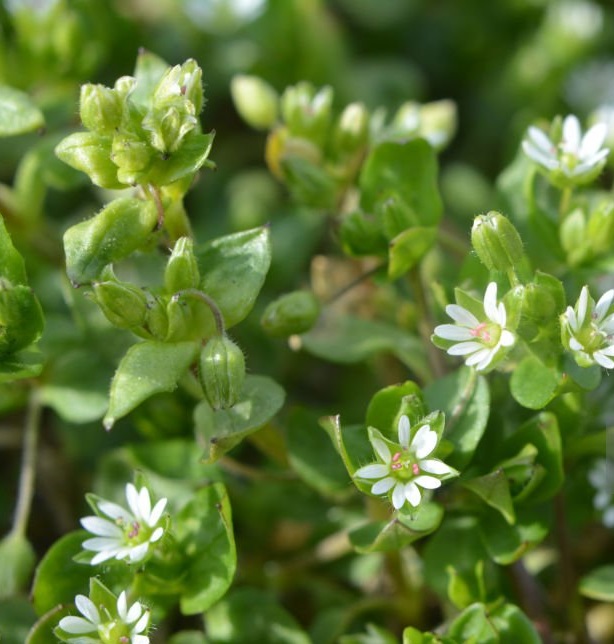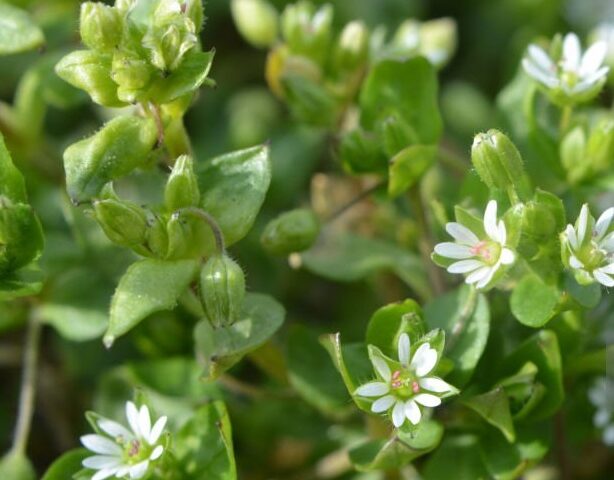As a avid forager, one of my favorite plants to seek out in the spring is chickweed (Stellaria media). Often regarded as a common weed, it is a great wild edible plant. I also see it as a culinary treasure full of flavor and nutrition just waiting to be discovered. In this guide, I’ll share how to find and harvest chickweed, along with some creative ways to enjoy it in your kitchen.
What is Chickweed?
Chickweed is a fast-growing annual herb that thrives in cool, moist environments. Whenever I’m out foraging in the spring, I’m always delighted to spot its small, star-like white flowers, which bloom from early spring through summer. The leaves are bright green, oval-shaped, and often have a slightly hairy texture. When I first started foraging, I was amazed at how such a simple plant could pack so many nutrients.

Nutritional Benefits
Chickweed is not just tasty; it’s also loaded with vitamins and minerals. It’s particularly high in vitamins A and C, along with several B vitamins. I appreciate its antioxidant properties, which can support overall health. With its delicate, mild flavor and crisp texture, chickweed adds a refreshing touch to any dish, and I often find myself reaching for it instead of traditional salad greens.
Where to Find Chickweed
One of the best aspects of how to find and harvest chickweed is its abundance. I often find it in the most unexpected places, making each foraging trip a new adventure.
Key Locations:
- Gardens and Lawns: Chickweed thrives in cultivated areas. I often check my garden and those of friends—many people consider it a nuisance, but I see it as a valuable green!
- Wooded Areas: Chickweed loves the shade, so I frequently find it along the edges of forests or in clearings. It’s like a hidden gem waiting to be found.
- Parks and Trails: Urban parks and along hiking trails are also prime spots for finding chickweed. Whenever I’m out for a walk, I keep my eyes peeled for its distinctive foliage.
I remember one of my favorite foraging days when I was wandering through a local park. I spotted a patch of vibrant green plants peeking through the grass, and my heart raced with excitement as I recognized it as chickweed!
Best Time to Harvest
Chickweed can be harvested throughout its growing season, but the best time to forage for it is in early spring, just before it flowers. The leaves are tender and flavorful at this stage, and I find them to be at their peak nutritional value.
If you wait too long, the plant tends to become tougher and may develop a slightly bitter taste, which is less appealing. I always mark my calendar for early spring to remind myself to check my favorite spots.
How to Harvest Chickweed
When it comes to how to find and harvest chickweed, I prefer using a pair of scissors or garden snips. This approach helps avoid uprooting the entire plant, allowing it to continue thriving for future harvests.
Steps to Harvest:
- Identify: Proper identification is key. Chickweed has a sprawling growth habit and often forms dense mats. I always ensure I’m familiar with its characteristics before I begin to harvest.
- Harvest: I cut the stems about an inch above the ground, taking only what I need for that day. I make a mental note of where I’ve harvested so I can return later for more.
- Clean: Once I’m home, I rinse the chickweed in cold water to remove any dirt or insects. I enjoy the process of cleaning it, as it reminds me of the connection I have with the land and the food I’m about to prepare.
Culinary Uses for Chickweed
Chickweed is not only nutritious; it’s incredibly versatile in the kitchen. I love experimenting with this wild green and finding new ways to incorporate it into my meals.
- Salads: I often toss fresh chickweed into salads for a nutritious crunch. Its mild flavor pairs well with other greens and adds an interesting texture. Sometimes, I’ll mix it with baby spinach, cherry tomatoes, and a light vinaigrette for a refreshing side dish.
- Smoothies: Chickweed makes a great addition to smoothies. I blend it with fruits like bananas and berries, and I can hardly taste it while reaping all the health benefits. It’s a fantastic way to sneak in some greens.
- Pesto: Chickweed can substitute basil in pesto for a unique twist on the classic sauce. I blend chickweed with nuts, olive oil, garlic, and parmesan cheese, and the result is a delicious, vibrant green spread that I can slather on sandwiches or serve over pasta.
- Soups and Stews: Near the end of cooking, I like to add fresh chickweed to soups and stews. Its flavor enhances the dish, and it wilts beautifully, maintaining its vibrant green color.
I recall one night when I made chickweed pesto and tossed it with whole grain pasta. My friends were amazed by how good it tasted and couldn’t believe it was made from a wild green!
Essential Foraging Gear for Chickweed
When I head out to forage for chickweed, there are a few tools I consider indispensable:
- Foraging Knife
A small, sharp knife is perfect for cutting chickweed without uprooting it. This allows me to harvest selectively and sustainably. Check it out on Amazon. - Harvesting Basket
A breathable basket is essential for keeping my foraged greens fresh. I find that using a basket with good airflow helps prevent bruising and maintains the crispness of the chickweed. Get yours here. - Field Guide to Edible Wild Plants
Having a reliable field guide with clear photos and descriptions helps me confidently identify chickweed and other wild edibles. It’s an invaluable resource on every foraging trip. Grab your guide here.
Safety Tips
While chickweed is generally safe to eat, I always stress the importance of proper identification. If I’m ever unsure, I consult a reliable field guide or reach out to experienced foragers for advice.
Additionally, I avoid harvesting from areas that may have been treated with pesticides or herbicides, as these chemicals can contaminate the plants. When foraging, I always follow the “look, don’t touch” rule to respect the ecosystems I explore.
Wrapping Up
Chickweed is a delightful wild green that offers numerous culinary possibilities. Learning how to find and harvest chickweed responsibly allows me to enjoy its benefits while deepening my connection with nature. I hope this guide inspires you to explore your surroundings and discover the treasures that chickweed has to offer. Happy foraging, and I’d love to hear your favorite ways to use chickweed in the comments below!

As an Amazon Associate, I earn from qualifying purchases. This means that if you click on an Amazon affiliate link on this site and make a purchase, I may earn a commission at no additional cost to you. All product recommendations and reviews are my own, based on personal experience and research. Your support helps keep this site running, and I greatly appreciate it.
Foraging for wild edibles like chickweed (Stellaria media) can be a rewarding and enjoyable experience, but it is essential to approach it with caution. Always positively identify any plant before consuming it, as some plants can be toxic or harmful. Consult reliable field guides or experts in wild foraging if you’re uncertain about a plant’s identity. Additionally, be mindful of your local environment and foraging regulations. Only harvest plants from areas that are free from pesticides or pollutants, and be respectful of nature by not overharvesting. If you have allergies or health concerns, please consult a healthcare professional before trying new wild edibles. Enjoy your foraging adventures responsibly!
